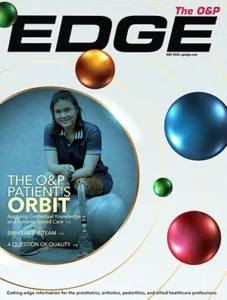The ability to sustain steady straight-ahead walking is one goal of gait rehabilitation for individuals with unilateral transfemoral amputations. A research team investigated the strategies of mediolateral ground-reaction-force generation adopted by 15 prosthesis users with unilateral transfemoral amputations as they walked on a straight path. The results showed that the participants could achieve symmetric mediolateral ground-reaction-impulse by adopting an asymmetric gait strategy: shorter stance time and higher mean mediolateral ground-reaction-force over the stance phase for the affected limb than for the unaffected limb.
In addition, the analysis revealed that the affected limb generated a higher mean medial ground-reaction-force component than the unaffected limb, especially during the single-support phase. The researchers concluded that may allow unilateral transfemoral prosthesis users to achieve mediolateral ground-reaction-impulses that are similar to those of the unaffected limb. These insights may serve as guidelines on the improved design of prosthetic devices and rehabilitation, the study’s authors wrote.
The study, “Unilateral above-knee amputees achieve symmetric mediolateral ground reaction impulse in walking using an asymmetric gait strategy,” was published in the Journal of Biomechanics.




